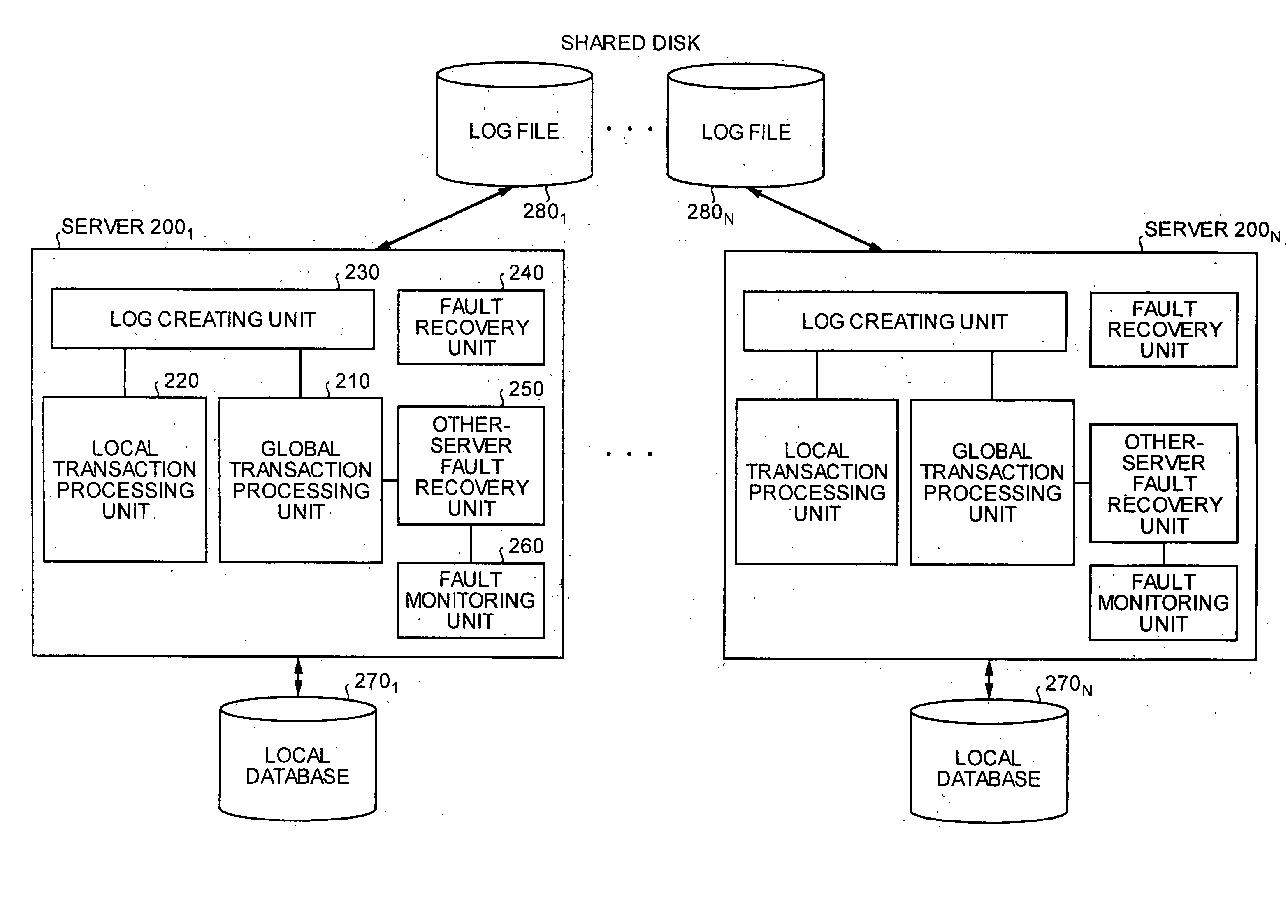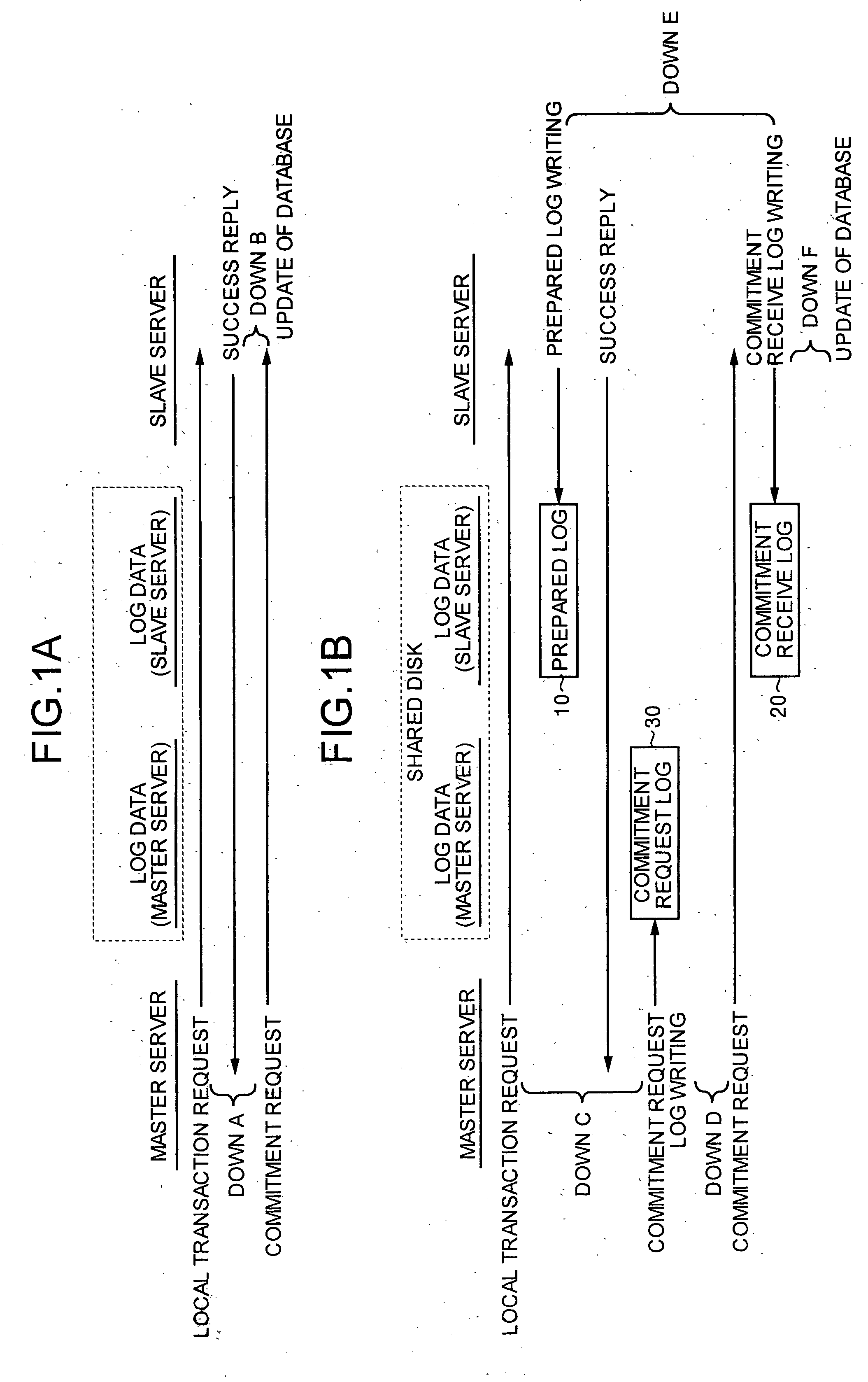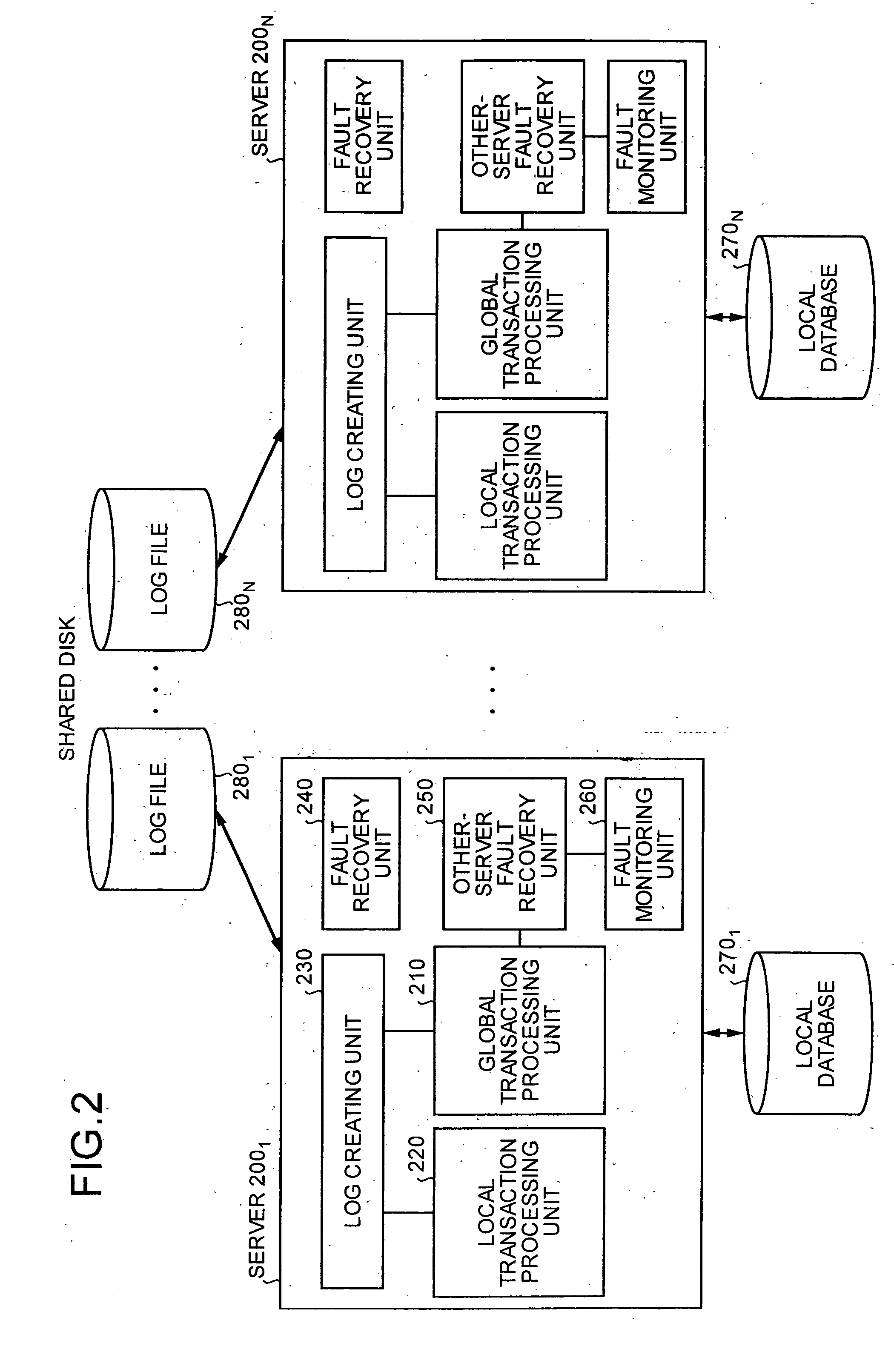Distributed transaction processing control
a technology of transaction processing and control, applied in the direction of fault response, multi-programming arrangement, instruments, etc., can solve the problems of increasing overhead in the three-phase commitment control, the slave server cannot determine the processing to be subsequently performed after sending the reply,
- Summary
- Abstract
- Description
- Claims
- Application Information
AI Technical Summary
Benefits of technology
Problems solved by technology
Method used
Image
Examples
Embodiment Construction
[0025] Exemplary embodiments of the present invention are described below in detail with reference to the accompanying drawings.
[0026]FIG. 1A is a diagram for explaining a conventional two-phase commitment control performed by a conventional distributed transaction processing system, whereas FIG. 1B is a diagram for explaining a commitment control performed by a distributed transaction processing system according to an embodiment of the present invention. The distributed transaction processing systems shown in FIGS. 1A and 1B respectively include a plurality of slave servers, although only one of which is shown in the figures for convenience of description.
[0027] In the conventional two-phase commitment control shown in FIG. 1A, the master server sends the local transaction request to the slave servers. The slave servers respectively perform the local transaction processing and send a success reply or a failure reply to the master server without updating the databases. The master ...
PUM
 Login to View More
Login to View More Abstract
Description
Claims
Application Information
 Login to View More
Login to View More - R&D
- Intellectual Property
- Life Sciences
- Materials
- Tech Scout
- Unparalleled Data Quality
- Higher Quality Content
- 60% Fewer Hallucinations
Browse by: Latest US Patents, China's latest patents, Technical Efficacy Thesaurus, Application Domain, Technology Topic, Popular Technical Reports.
© 2025 PatSnap. All rights reserved.Legal|Privacy policy|Modern Slavery Act Transparency Statement|Sitemap|About US| Contact US: help@patsnap.com



